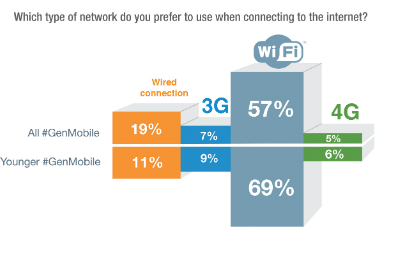 Cyan introduced its Planet Orchestrate, a multi-vendor and multi-domain, NFV and Cloud orchestration application for its Blue Planet SDN platform. The application combines the power of WAN service creation and automation with the orchestration of virtual resources. The goal is to help network operators quickly introduce, automate, and operationalize new virtualized services between data centers, on top of existing network services, and across the WAN.
Cyan introduced its Planet Orchestrate, a multi-vendor and multi-domain, NFV and Cloud orchestration application for its Blue Planet SDN platform. The application combines the power of WAN service creation and automation with the orchestration of virtual resources. The goal is to help network operators quickly introduce, automate, and operationalize new virtualized services between data centers, on top of existing network services, and across the WAN.Specifically, Planet Orchestrate provides multi-domain orchestration, cloud services orchestration, and NFV orchestration (based on the ETSI NFV ISG Management and Orchestration framework). This new Blue Planet application utilizes open APIs to ensure interoperability with different OSS/BSS platforms, cloud management systems, SDN controllers, and virtualized network function (VNF) managers.
Cyan highlighted the following key features:
- Multi-Domain Service Orchestration: Planet Orchestrate enables seamless service delivery across multiple domains. It can leverage existing SDN controllers (e.g., Cyan’s Blue Planet SDN Platform, OpenDaylight, etc.) and management platforms (e.g. cloud managers, network managers, element managers) to deploy end-to-end services. Through a single “pane-of-glass”, Planet Orchestrate can help break down management silos and enables network operators to provision and manage services across networks comprised of both legacy and new SDN/NFV-enabled components. Multi-Domain Service Orchestration supports service-chaining between VNFs and physical network functions (PNFs) to allow operators to efficiently deploy services across networks. PoCs and trials are currently underway. Commercial release is expected in Q3.
- NFV Orchestration: Planet Orchestrate is designed to fulfill the roles of the orchestrator and VNF manager functionality described in the ETSI NFV ISG architecture. Planet Orchestrate NFV orchestration is both VNF vendor and function neutral, providing a platform for operators to deploy and manage a variety of VNFs at varying degrees of scale and performance. Planet Orchestrate supports VNF management and orchestration across one or more data centers, as well as distributed architectures where VNFs may be deployed at the customer premise edge. Furthermore, the NFV orchestration engine supports intelligent VNF placement to maximize performance within a virtualized infrastructure. PoCs and trials are currently underway. Commercial release is expected in Q3.
- Cloud Orchestration: Planet Orchestrate enables network operators to offer flexible data center service offerings, such as IaaS, PaaS, etc. and coordinate that across a wide area network. Operators will be able to offer their customers the ability to dynamically instantiate new cloud resources, such as virtual machines, new tenant networks, and storage, on-demand through an enterprise portal with the ability to control network (bandwidth-on-demand) and virtual (VM) resource allocation. PoCs and trials are currently underway. Commercial release is expected in Q4.
Cyan also noted that its Blue Planet platform is currently deployed and providing SDN control and service automation in over 120 networks today.
http://www.cyaninc.com
Earlier this month, Cyan announced that CenturyLink is sponsoring an ETSI NFV ISG-approved proof of concept (PoC) solution based on RAD’s dedicated customer-edge D-NFV equipment running Fortinet’s Next Generation Firewall (NGFW) and Certes Networks’ virtual encryption/decryption engine as Virtual Network Functions (VNFs) with Cyan’s Blue Planet system orchestrating the entire ecosystem.
 The companies said their D-NFV allows the placement of VNFs where they will be both most effective and least expensive, including at the customer edge. The model enables service providers to quickly and easily roll out new services and implement advanced capabilities without having to put capital expenditures upfront into the data center or redesign the network.
The companies said their D-NFV allows the placement of VNFs where they will be both most effective and least expensive, including at the customer edge. The model enables service providers to quickly and easily roll out new services and implement advanced capabilities without having to put capital expenditures upfront into the data center or redesign the network.Cyan's Blue Planet can orchestrate both NFV and multi-vendor Ethernet services.
VNFs at the customer edge are implemented with RAD’s ETX-2, a D-NFV empowered NID, the cornerstone of RAD’s Service Assured Access solution. RAD's solution integrates an x86 server platform to host value-added service capabilities, as well as network functionalities that run on virtual machines.
Fortinet and Certes Networks provide VNFs that are instantiated on RAD’s ETX-2 by Cyan’s Blue Planet SDN Platform. Fortinet’s FortiGate-VM enforces next-generation firewall security functions that provide network and application layer protection. Real-time security updates are pushed to the FortiGate-VM by FortiGuard subscription services to ensure it is aware of and enforcing protection from the latest security threats. FortiGate-VM is managed by Fortinet’s FortiManager-VM and FortiAnalyzer-VM, which provide centralized configuration, control and security analytics.
The virtual Certes Enforcement Point (vCEP) is a virtual encryption solution that secures data in motion over any public or private network. vCEPs can be dynamically provisioned to create Certes’ CryptoFlow VPNs, fully meshed multi-point VPNs safeguarding data in physical, virtual and Cloud environments. CryptoFlows protect critical data for any application with automatically enforced policies and simplified control of encryption keys.

















